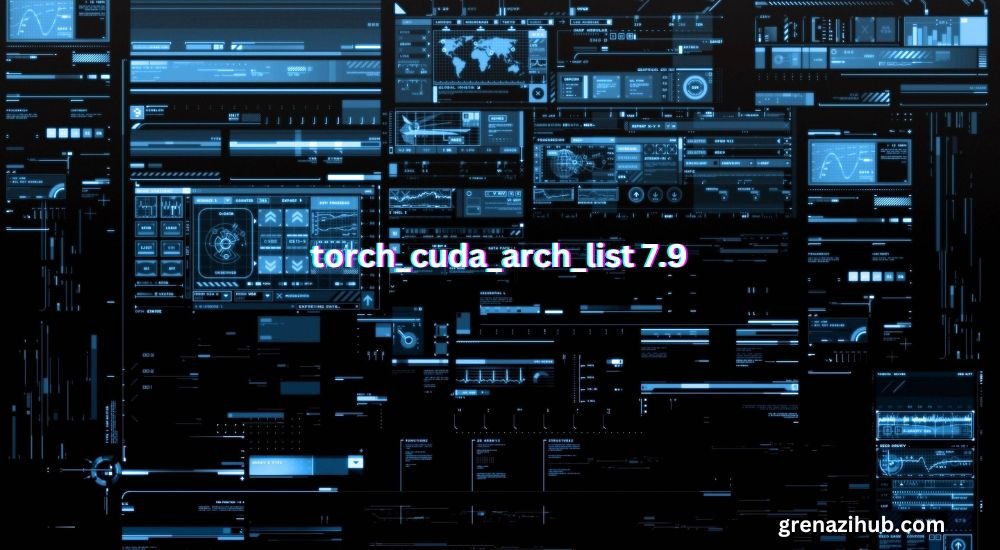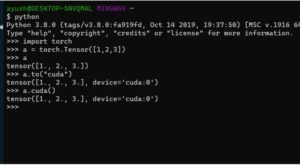
With the release of PyTorch 7.9, developers working on machine learning (ML) and deep learning (DL) models gain access to the latest CUDA architecture capabilities. This article provides an in-depth look at the torch_cuda_arch_list 7.9 function in version 7.9, its applications, and how it improves GPU performance in PyTorch.
Understanding CUDA Architecture in PyTorch
CUDA (Compute Unified Device Architecture) is a parallel computing platform by NVIDIA that allows GPUs to process complex calculations more efficiently than traditional CPUs. CUDA enables the execution of tasks by breaking them down into parallel processes, which can be run simultaneously on the many cores available in a GPU. CUDA has a crucial role in speeding up ML and DL workflows in PyTorch. By utilizing CUDA, PyTorch allows developers to offload data processing and computation-heavy tasks from the CPU to the GPU, significantly reducing computation time.
Importance of torch_cuda_arch_list 7.9 in PyTorch
torch_cuda_arch_list is a function in PyTorch that specifies the range of CUDA architectures supported by a particular version. This list determines which GPU architectures can use CUDA features in PyTorch, which directly impacts model performance and efficiency. The torch_cuda_arch_list 7.9 function helps developers optimize their code by selecting specific GPU architectures that best suit their needs. This function is essential when deploying models across different GPU setups, as it ensures compatibility and efficient performance.
New Features in torch_cuda_arch_list 7.9
Version 7.9 of torch_cuda_arch_list is not set introduces optimizations that enhance the performance of ML and DL models. It offers updated compatibility with newer GPUs and improves speed on certain architecture configurations. The 7.9 release focuses on increasing compatibility with NVIDIA’s latest GPUs while refining backward compatibility with older architectures. Enhanced memory management and optimized parallel computation for large-scale models are key updates in this version.
CUDA Compute Capabilities Explained
Compute capability is a measure of a GPU’s processing power and its ability to handle CUDA tasks. Different GPUs support different compute capabilities, which define how many cores are available, memory capacity, and processing speed. torch_cuda_arch_list 7.9 leverages compute capabilities to select GPU-specific optimizations. This enables PyTorch to take advantage of the GPU’s full potential, ensuring faster computations and lower latency.
How to Access torch_cuda_arch_list in PyTorch

To access torch_cuda_arch_list 7.9, PyTorch must be installed with CUDA support. This can be done by specifying the CUDA version during installation:
bash
Copy code
pip install torch –extra-index-url https://download.pytorch.org/whl/cu117
After installation, developers can check CUDA compatibility by using:
python
Copy code
print(torch.cuda.get_arch_list())
Setting Up torch_cuda_arch_list for Optimal Performance
The torch_cuda_arch_list is not set can be configured to target specific GPU architectures, which can be adjusted in PyTorch’s settings to prioritize performance. Developers can modify the compute capabilities in torch_cuda_arch_list 7.9 to ensure compatibility with their GPUs and improve performance.
Compatibility of torch_cuda_arch_list 7.9 with GPUs
Version 7.9 of torch_cuda_arch_list supports a wide range of NVIDIA GPUs, including the latest models in the Ampere and Turing series, as well as select older models. To verify GPU compatibility with version 7.9, developers can consult NVIDIA’s CUDA compatibility chart or use PyTorch functions to list supported architectures.
Upgrading to torch_cuda_arch_list 7.9
To upgrade to torch_cuda_arch_list 7.9, follow these steps:
- Update PyTorch: Ensure PyTorch is upgraded to the latest version.
- Install Updated CUDA Toolkit: Download and install CUDA version compatible with PyTorch 7.9.
- Verify Compatibility: Run checks to confirm torch_cuda_arch_list 7.9 updates are recognized by your GPU.
Check that your system’s GPU supports the compute capabilities listed in version 7.9. Incompatibilities may lead to errors or reduced performance.
Common Errors with torch_cuda_arch_list and Solutions
Some common errors with torch_cuda_arch_list is not set include version mismatches and unsupported architectures. Updating PyTorch and CUDA, or selecting compatible GPUs, often resolves these issues. If you experience reduced performance, consider optimizing GPU settings in torch_cuda_arch_list 7.9 and reducing background processes that may compete for GPU resources.
Optimizing Machine Learning Models Using torch_cuda_arch_list
Using torch_cuda_arch_list optimally means selecting architectures that match your hardware’s capabilities. Additionally, batch processing and memory management improvements can significantly increase model efficiency. Developers have reported reduced training times and smoother inference with torch_cuda_arch_list 7.9, especially on Ampere-based GPUs.
Benchmarking torch_cuda_arch_list 7.9 Performance
To benchmark torch_cuda_arch_list 7.9, developers can run model training and inference tasks, measuring computation time and GPU utilization. Performance benchmarks should be reviewed for latency, throughput, and resource usage. Comparing these metrics against previous PyTorch versions can highlight improvements.
Advanced Configurations for torch_cuda_arch_list
Advanced users can customize the list of supported architectures by manually editing torch_cuda_arch_list. This is useful for targeting very specific GPUs. Multiple GPU architectures can be configured in PyTorch to support heterogeneous environments, a common scenario in large-scale production.
Benefits of Using torch_cuda_arch_list for Deep Learning
torch_cuda_arch_list enables faster training and inference by leveraging optimized GPU settings, making it invaluable for complex deep learning models. From image classification to natural language processing, torch_cuda_arch_list is not set allows high-performance deployment of models across a variety of deep learning applications.
Conclusion
The torch_cuda_arch_list 7.9 update offers substantial improvements in speed, compatibility, and performance for GPU-enabled deep learning workflows. For developers working in ML and DL, understanding and configuring torch_cuda_arch_list 7.9 can lead to major time savings and more efficient processing. PyTorch’s integration of CUDA support continues to evolve, empowering users to build powerful models without hardware limitations.